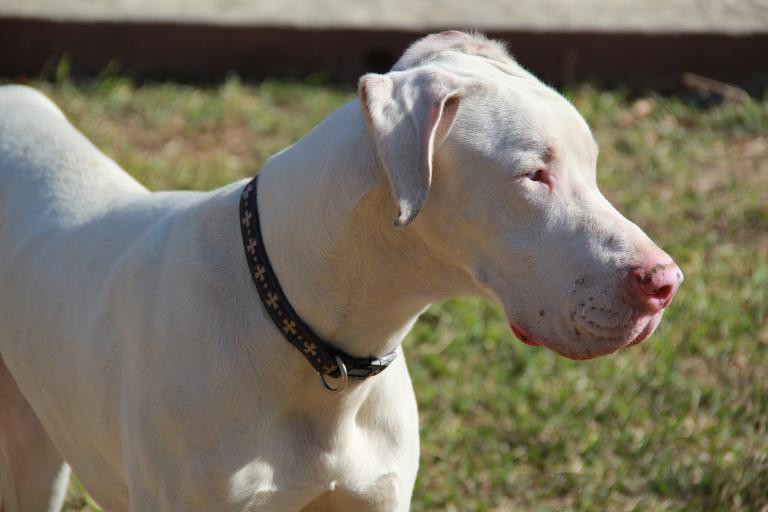Merle (Coat colour M-Locus Dog)
Merle coloured dogs show a pattern of darker and lighter patches which appears random. The eyes may be lighter or blue in colour.
The colour is caused by the M allele of the M locus. Homozygous animals (M/M) have severe health problems such as deafness, blindness and organ problems.
Genetic Test: available in Shop
General Information
- The dog shows a partially lightened coat.
- The pattern of darker and lighter patches appears random and extensively torn and spotted.
- The different colours range from black to grey to white in dogs with a dark base colour, from brown to beige to white in dogs lightened to brown.
- The eyes may be lighter or blue in colour.
- Merle pattern affects only the dark pigment eumelanin (E locus E/*), dogs with a light base colour (E locus e/e) do not show the pattern but may be carriers.
- The colour is caused by the M allele of the M locus.
- Homozygous animals (M/M) have severe health problems such as deafness, blindness and organ problems.
- The breeding of two animals with merle colouration is therefore forbidden in Germany due to the animal protection law. Animals with light base colour (E locus e/e) and merle ancestors should be tested before breeding.
Test Information
Locus Information: M-Locus
This test detects an insertion in the PMEL gene.
Test in Shop
Also in the:
Genotype and Lab Report
Inheritance: autosomal dominant.
→ Animals with one or two copies of the gene (M/m, M/M) show the merle phenotype. Homozygous animals (M/M) have severe health problems.
Genotypes
m/m = Two copies non-functional
No disposition for merle, the dog does not have merle spotting.
M/m = One copy intact and one copy non-functional
Merle colouration is pronounced, the dog shows a pattern of darker and lighter parts.
M/M = Two copies functional
Homozygous dogs have severe health problems. They are completely white.
Appearance
('Blue'-) Merle
The dog shows a pattern of darker and lighter patches on dark base colour and often blue or bicoloured eyes. The colouration occurs in many breeds e.g. Australian Shepherd, Collie (Border, Sheltie), Great Dane and Dachshund.
Possible genotypes:
E/* at/* s/* M/m
(Here dark base colour with "black-and-tan" pattern: A-locus at/* and "Irish spotting" markings: S-locus s/*)
('Red'-) Merle
The dog shows a pattern of darker and lighter patches on a brown base colour and often blue or bicoloured eyes.
Possible genotypes:
E/* at/* b/* s/* M/m
(Here dark base colour diluted to 'brown': B-locus b/* with 'black-and-tan' pattern: A-locus at/* and 'Irish spotting' markings: S-locus s/*)
Literature
Murphy, S.C., Evans, J.M., Tsai, K.L., Clark, L.A.: PMEL: correlating genotype with phenotype. Mob DNA 9:26, 2018. Pubmed reference: 30123327. DOI: 10.1186/s13100-018-0131-6.
Varga, L., Lénárt, X., Zenke, P., Orbán, L., Hudák, P., Ninausz, N., Pelles, Z., Szőke, A.: Being Merle: The Molecular Genetic Background of the Canine Merle Mutation. Genes (Basel) 11:, 2020. Pubmed reference: 32560567. DOI: 10.3390/genes11060660.
Further information is available at Online Mendelian Inheritance in Animals.



